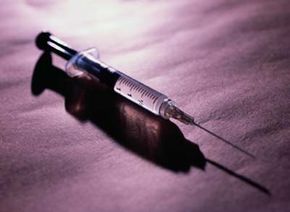The human body is both surrounded and inhabited by billions of microorganisms (living organisms that are so small that they can be seen only with a microscope). Most microorganisms are harmless or even beneficial; for example, bacteria that normally live in the digestive system help digest food.
Occasionally, however, a microorganism capable of causing a disease invades the body. Diseases caused by such microorganisms are called infectious diseases.
Advertisement
Infectious diseases are contagious; that is, they can be passed from one person to another. They can be transmitted by skin contact, through body fluids, in contaminated food or drink, or via airborne particles containing the microorganisms, although the pathways and ease of transmission vary by disease.
Animal or insect bites are another means of transmission. (If an insect, for example, bites an infected person, the insect can carry the microorganism and pass the disease by biting another person.) The two most common types of infectious diseases are bacterial infections and viral infections.
Disease-causing, or pathogenic, bacteria either attack the body's tissues directly or cause damage by secreting poisonous substances called toxins. Fortunately, bacterial infections are often curable. Certain bacteria can be killed by drugs; other bacterial diseases can be prevented by vaccination.
Viruses are the smallest known microorganisms. They are responsible for diseases as relatively harmless as the common cold and as serious as meningitis. Viruses live and reproduce only within living cells, and only certain cells are susceptible to a specific virus. You can be host to many viruses without suffering any adverse effects, but if enough cells are attacked, you will become sick.
There is no effective medical treatment for most viral infections. Because a virus lives inside a cell, any treatment designed to kill the virus is also likely to harm the cell. In addition, there are thousands of different viruses -- each one with different properties -- and an agent effective against one virus probably will not affect the others. Although there are vaccinations to protect against some viral diseases, therapy for most viral diseases is limited to treating the symptoms.
In this article, we'll focus on the many facets of infectious diseases, starting with how the body defends against them.
[Video Insert Place Holder]
Advertisement


